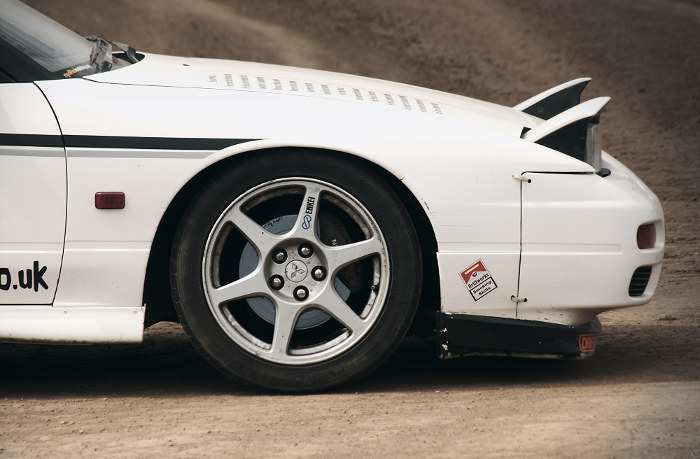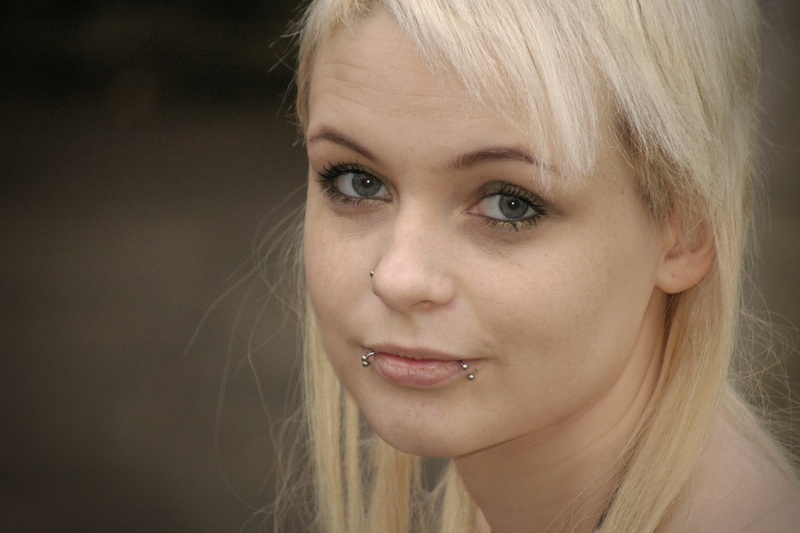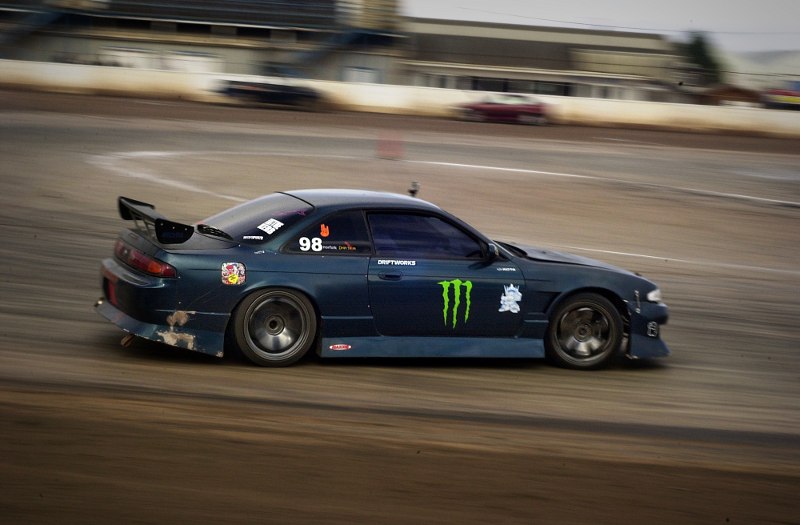
Left to right: Nikon D2H (actually a D2Hs, but who's counting), Nikon D200, Nikon D70, Nikon D1. Not to scale, but I put the same 50mm f/1.8D lens on each camera.
from Shutter, by Lewis Collard

Left to right: Nikon D2H (actually a
D2Hs, but who's counting), Nikon
D200, Nikon D70, Nikon D1.
Not to scale, but I put the same 50mm f/1.8D lens on each camera.
This article was written in 2014. Comparisons & prices should be considered as a time capsule.
Digital cameras came an awfully long way in the last decade and a half, as all technology has. In 1999, "digital camera" usually meant a chunky sub-three-megapixel beast with just-about-good-enough image quality; today it means spending less than a grand for a clean ISO 6400 - or, indeed, might mean not carrying a standlone camera at all.
As with all technology that moves so quickly, the cameras made obsolete by these changes, which were once unreasonably expensive (to anyone that wasn't really into photography) are now incredibly cheap, and today there is a used SLR for someone on just about any budget.
Let's take a look at today's contenders for our almost-free digital SLR deathmatch!
IN THE BLUE CORNER is the Nikon D2H from 2003. This also includes the D2Hs from 2005, which is a very subtly improved version of the D2H for nearly the same price.
IN THE RED CORNER is the Nikon D200 from 2005, which was Nikon's first semi-professional camera. Call it "Honey, I Shrunk the D2H"; it's about the same size as the D2H if you hacked off the latter's vertical grip. It has about 10 megapixels and it came out in 2005.
IN THE MAGENTA CORNER is the Nikon D1, which, having kick-started the digital SLR revolution in 1999, is one of the most important cameras ever made. (It's actually another red corner, but the D1 has really weird colour rendition.)
AND FINALLY we have the Nikon D70, which was Nikon's first truly consumer-priced digital SLR camera. It's from 2005 and has 6 megapixels.

Shot with a Nikon D2H, Nikon
18-55mm II at 20mm, ISO 200 and 1/90 at f/4.8,
raw file processed with Darktable.
On
black in the gallery.
The D2H is perfect, for me, and is the clear winner. It has dedicated switches and buttons for everything, and all of those buttons are in the right place. People who aren't me won't like its colossal size and weight; my Kiev 88 desensitised me to these things.
The D200 is nearly the same. I prefer the feel of the bigger D2H, and the locations of its playback buttons, but this is more than likely because I've been using some variant of the D2-series for over four years now. I actually prefer the metering-mode switch on the D200, too. (That doesn't detract from my declaration that the D2H is perfect above; I have never needed to use anything other than the D2H's Matrix meter.)
The D70 is great, but it shares things like the ISO and white balance buttons with playback buttons, so you can't adjust those settings while playing back your shots. It also buries some important settings, that confuse normal people, like AF-C/AF-S mode, in menus.
The Nikon D1 is weird. The worst bit is that many settings that you'll want to set in the field aren't just buried in menus like the D70; they're buried in numbered custom functions, which means printing out and carrying around two pages of the manual. Despite having more dedicated buttons than the D70, it finishes last here.

Shot with a Nikon D1, 55-200mm VR at 200mm, 1/320 at f/10 and ISO 200.
The D2H has unbeatable autofocus. It really does focus quickly and accurately enough to keep up with the 8-franes-per-second frame rate. The combination of frames-per-second and brutal autofocus is why these are, ten years after their introduction, still in use by professional sports and news photographers all over the world.
The D200 is nearly as great, but not nearly as fast. It has the same number of autofocus points as the D2H (eleven). Some people prefer the D200's somewhat smaller marking of autofocus points in the viewfinder, but I don't. For reasons unknown, my D200 sometimes refused to focus at all with certain lenses at certain focal lengths.
The D1 focuses incredibly fast (actually, the AF motor is slightly faster than both my D2Hs and my D200, and it tries its hardest to destroy my plastic 50mm f/1.8D) but lacks the awesome group-dynamic AF modes of the D200 and D2H.
The D70 is slower than the other cameras, and also requires digging through the menus to choose between AF-C (continuous autofocus) and AF-S (focus-and-lock), so it comes last.
This is only about how quickly and accurately you can acquire focus. For still subjects, there's very little difference between the cameras (forgiving the D200's strange autofocus problems). There's even less difference between these cameras if you're using them with AF-I or AF-S lenses (lenses with built-in focus motors, the AF-S name being confusingly identical with the single-shot AF mode built into the camera's electronics). All of these will autofocus faster than any non-SLR camera, too.
The D1 and D2H are built like anti-tank missiles. They're indestructible, weather-sealed, all-metal beasts. The D1 is heavier, which might imply tougher, but has a flimsy-looking metal door covering the controls on the bottom rear of the camera, so I'll call it a draw.
The D200 is a smaller, gentler D2H. It's weather-sealed and mostly made of metal, with some flimsy compromises like the CF card and battery doors, and a plastic pop-up flash. (Both the D1 and D2H have no built-in flash.)
The D70 is mostly plastic, but the CF card door of the D70 is still superior to the D200's.
It's all good, and there are no real winners here. The single-digit cameras were built for full-time professional sports and wildlife photographers and photojournalists, which means you'll be lucky to find one at non-collector prices with a low shutter count and all its paint intact. The all-plastic D70 was built for people who don't pound on their gear like full-time professionals do, so it's easy to find one in mint condition with ten thousand shutter actuations or less.
All of these cameras work perfectly with AF, AF-I and AF-S lenses, so if you're a normal person, there is no difference between them.
The D200 and D2H win for use with manual focus AI and AI-S lenses. You can even get matrix metering if you go into a menu and set your lens' maximum F-stop and focal length. This is great if you're into bargain 1980s telephotos for still work. The D2H marginally beats the D200 for Nikon system because it also supports d-TTL flash metering, which you don't want to use because it is dreadful.
The D1 meters fine with manual focus lenses, but only in centre-weighted mode. For the careful stills one shoots with a manual focus lens, this is not significant. It won't work properly with i-TTL flash guns.
The D70 does not meter at all with manual focus lenses, if you care, so it comes last.

Shot with a Nikon D70,
Nikon 55-200mm VR at
200mm and f/5.6, ISO 500 and 1/60, perfect built-in fill flash.
On black.
The D70 is awesome! It has a built-in flash with a whopping 1/500 flash sync (which is twice as fast as the D2H, D200, or today's Nikon D4!). Fit an old manual flash gun which doesn't talk to the camera and you can sync all the way up to 1/8000! More importantly, it has fantastic fill-flash metering for photographing people in daylight.
The D200 does have a built-in flash. It's the same as the D70's, but the D200 only syncs at 1/250.
The D2H syncs at 1/250, like the D200, and gets third place because it has no built-in flash. If you put a Nikon iTTL external flash on the D2H, fill flash performance is equally as excellent as the D200 and D70.
The D1 has a bad flash system called D-TTL. Don't bother with it; if I had to use a flash gun with the D1 I would use a manual flash gun, because guesswork is somewhat more reliable than the seemingly random exposures given by D-TTL. It finishes last, despite sharing a beastly 1/500 sync with the D70.
The D200, D2H and D70 have matrix meters which are about as good as each other, which is to say, excellent. All three have their quirks, as all cameras do; for example, the D70 tends towards overexposure, and the D2H can underexpose by a stop or even more in very dim light (indoors under fluorescent lights, or late on an overcast day). I'd call them about the same; you'll find more exposure variation walking a hundred yards and shooting a different subject on the same camera than there is difference between cameras. I happily shoot slide films on film cameras that have meters this good!
All three of those cameras have flash meters that are just about perfect for fill flash in daylight, as mentioned.
All of them look pretty bad nuking subjects indoors with direct flash. Don't do this; it always looks terrible, regardless of camera. Get yourself any 1980s flash gun and bounce off the ceiling for much better results!
The D1's meter works great, but comes last because of its bad D-TTL flash metering.
The D2H lives forever on a charge, as does the D70. You won't need to carry a spare battery. The D2H lasts quite a lot longer than the D70, but it also runs over twice as fast. It's easy to say "well, I'll just dial back a D2H to three frames a second" (hint: set it to "Cl" on the advance dial and change C.Fn d1). Nobody ever buys a D2H to shoot it at three frames a second, so I'll call this one a draw between the D2H and D70.
The D200 is rated at 1,800 shots per charge. I don't know how Nikon gets this figure, but I get maybe a half of that under my conditions with a known-good battery.
The D1 is terrible. If you're even a moderate shooter you won't make it through a day without a spare. Aftermarket batteries are better, and home-brewed packs fitted with 18650 lithium ion cells are better still.
Everyone knows that it's not about how good your pictures look; it's about how serious you look while taking them (any photographer who tells you that's not the real reason they carry an SLR is not being honest with themselves). And the D1 wins, every time. It's a gigantic, beautiful thing; just angular enough to make it look aggressive, and just curvy enough to make it look modern. It's at least superficially a direct derivative of the F5, so it shouts get out of my way kids, I've got serious photographer shit to do.
I'd compare the other three, but that would be like doing a road test of family cars then comparing them to an SM-65 Atlas; they're in a very different category of things.
Image quality is not something independent of the other things I've written about, which is why I've put it last on the list. For example, the D70 looks worlds better than the D1, but if you're shooting motorsports, that won't help you much if your shots are out of focus because your camera can't autofocus fast enough with your lenses. And your D70 will take infinitely better motorsport photographs than that of a D1 which isn't shooting at all because the battery died! I'm talking about how these cameras work everything else being equal.
With that said: The D200 wins. It's not just about having far more pixels than all of the other cameras (about the same as the D2H and D70 combined!). For an outdoor shooter like me, the D200 always looks fantastic, straight from the camera. High ISOs look fine, too; don't be afraid to grab ISO 1600 if you need it.
The D70 looks great in daylight. Don't worry about the mere six megapixels; a sharp six megapixel source file is more than good enough for 18" prints, if you're even printing at all. (An HD computer monitor or TV is only 2 megapixels, which is why I say that "HD" is actually a code word for "less resolution than digital cameras had in 1999".)
The D2H has less resolution than either camera above and looks far worse than the D200 at high ISOs. It's about the same as the D70, with less resolution and worse colour straight from the camera. (Raw files carefully processed with Darktable look great.)
The D1 is relatively terrible. The big one is that the colour rendition is pretty random; it doesn't even have a defined colour space (though it's close to NTSC, for whatever reason, and nothing like sRGB). I could deal with the low resolution and any-ISO noise if it always got fantastic colour, but it doesn't; you'll have to shoot raw and do a lot of very careful post-processing to make it look right. What's more, NEF raw data isn't really raw data! It's already had a bunch of transforms added to it if you've changed your white balance setting. On top of that, if you pull even a reasonable curve out of an ISO 200 shot from a D1, you might start bringing out noise which is visible even at modest web (1024 pixels wide) enlargements.
Sorry, D1, I love you anyway.

Shot with a Nikon D1 and a Nikon
50mm f/1.8D 1/80 at ISO 200 and f/22.
The D70 wins here. I checked just now and they're going for well under a hundred quid used, body only. Play your eBay cards right and you can get a D70 with a used 18-55mm lens for well under £150!
The D1 goes for about the same price, which makes it a vastly worse camera at the same price.
Both the D200 and D2H go for about £150 to £200 used, depending on the condition, your luck, and your eBay skills. If you're good at this, you'll get a D200 with a lens for £200 or less.
Don't buy a D1 with your own money unless you have a sense of humour. I have a sense of humour, but I didn't even buy the D1 (a reader of this site sent one to me). The D70 is vastly better in nearly every way that matters. On the other hand, the D1 is an amazing thing to have in your hand, so I would never get rid of mine; buy one just for the sake of owning one if you really must burn a hundred quid for some reason.
From the other three, there's not a clear winner.
On balance, I prefer the heavier, tougher, faster, and enormous D2H and D2Hs for my own shooting.
The D200 rocks for stills; it always gets great colours under any kind of natural light and looks great at any non-pushed ISO. I couldn't live with the weird autofocus errors and limited battery life, and it's not that much lighter than the D2H.
The D70 is fantastic if you want an SLR camera on a point-and-shoot budget. Just get one if that's your budget and you want a camera capable of shooting just about anything. It was a bargain back in 2012 when I first said it and it's even more of a bargain as I write this in late 2013, at less than a hundred quid for a body, or less than £150 with a lens.
Which one you will go for depends on your needs, but most of you that don't need to make three-foot-wide prints and don't need an all-metal camera and 8 frames a second will be very happy with the D70.